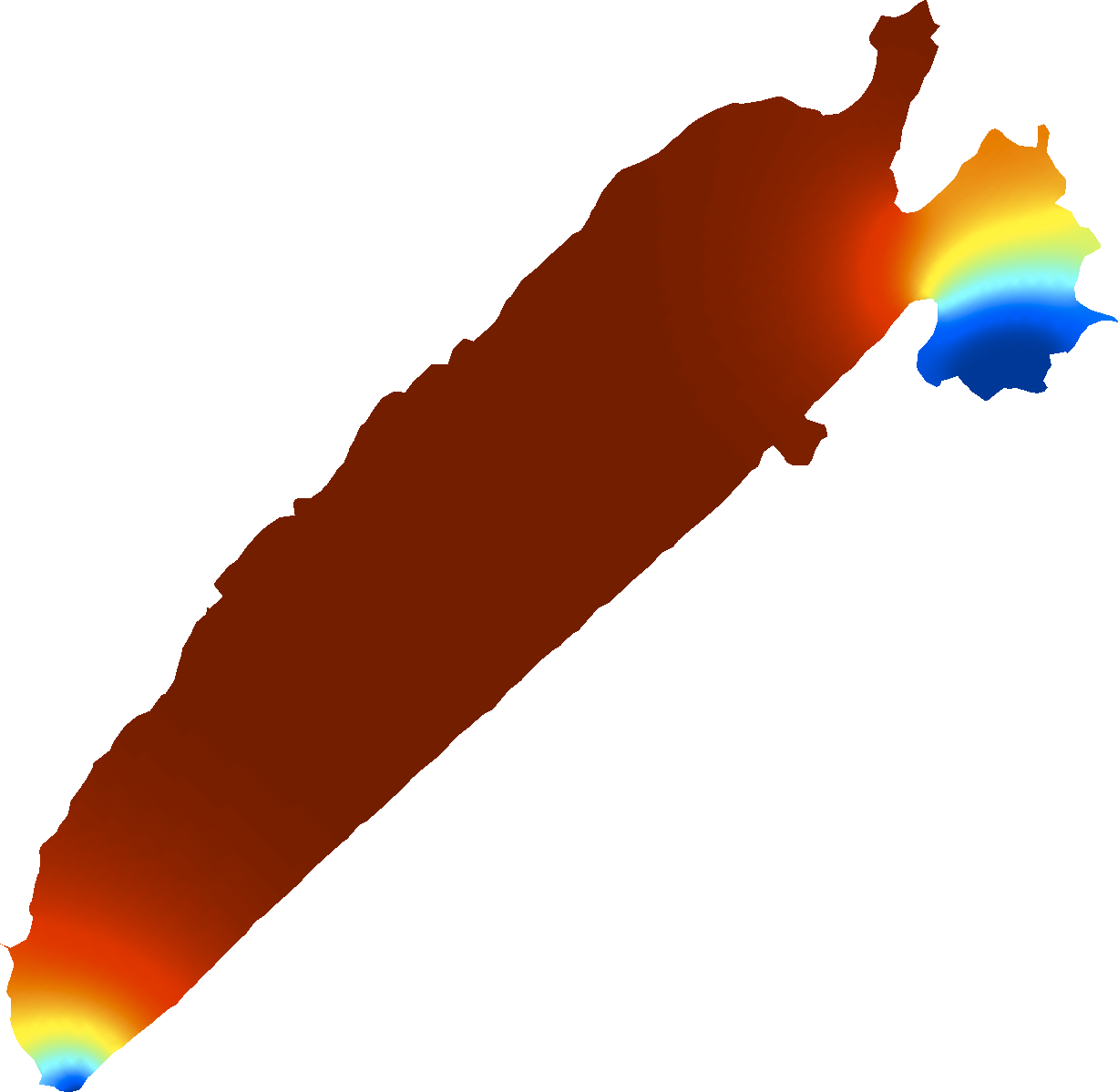Section: New Results
Mathematical modelling for CFD-environment coupled systems
Participants : Antoine Rousseau, Maëlle Nodet.
Minimal-time bioremediation of natural water resources
The objective of this work is to provide efficient strategies for the bioremediation of natural water resources. The originality of the approach is to couple minimal time strategies that are determined on a simplified model with a faithful numerical model for the hydrodynamics. Based on a previous paper that deals with an implicit representation of the spatial inhomogenity of the resource with a small number of homogeneous compartments (with a system of ODEs), we implement a coupled ODE-PDE system that accounts for the spatial non-homogeneity of pollution in natural resources. The main idea is to implement a Navier-Stokes model in the resource (such as a lake), with boundary conditions that correspond to the output feedback that has been determined to be optimal for the simple ODEs model of a (small) bioreactor. A first mathematical model has been introduced and numerical simulations have been performed in academic situations. We built a reduced model that approximates the reference PDE model thanks to a set of ODEs with parameters. Numerical optimization is performed on these parameters in order to better fit the reference model. In addition, bioremediation algorithms proposed by the authors have been sent to Inria Technology Transfert Services for a patent registration. Two publications (ready for submission) will be sent as soon as the patent submission process is complete.
Finally, A. Rousseau spent 2 weeks in Santiago (April 2013) upon Inria Chile’s invitation in order to work on the bioremediation of natural resources. AR and Inria Chile made a common answer to a chilean funding program (by COPEC) that was not chosen.
Mathematical modelling for the confinement of lagoons
This work deals with the concept of confinement of paralic ecosystems. It is based on a recent paper by E. Frénod that presents a modelling procedure in order to compute the confinement field of a lagoon.
A. Rousseau and E. Frénod improve in 2012 the existing model in order to account for tide oscillations in any kind of geometry such as a non-rectangular lagoons with a non-flat bottom. The new model, that relies on PDEs rather than ODEs, is then implemented thanks to the finite element method. Numerical results confirm the feasibility of confinement studies thanks to the introduced model. During the internship of J.-P. Bernard, we implemented the proposed method in a realistic situation, namely the Etang de Thau in Languedoc-Roussillon, France (see Figure 6 ). This led to two publications in 2013 [5] and [13] , plus one accepted paper in 2014 [6] .


